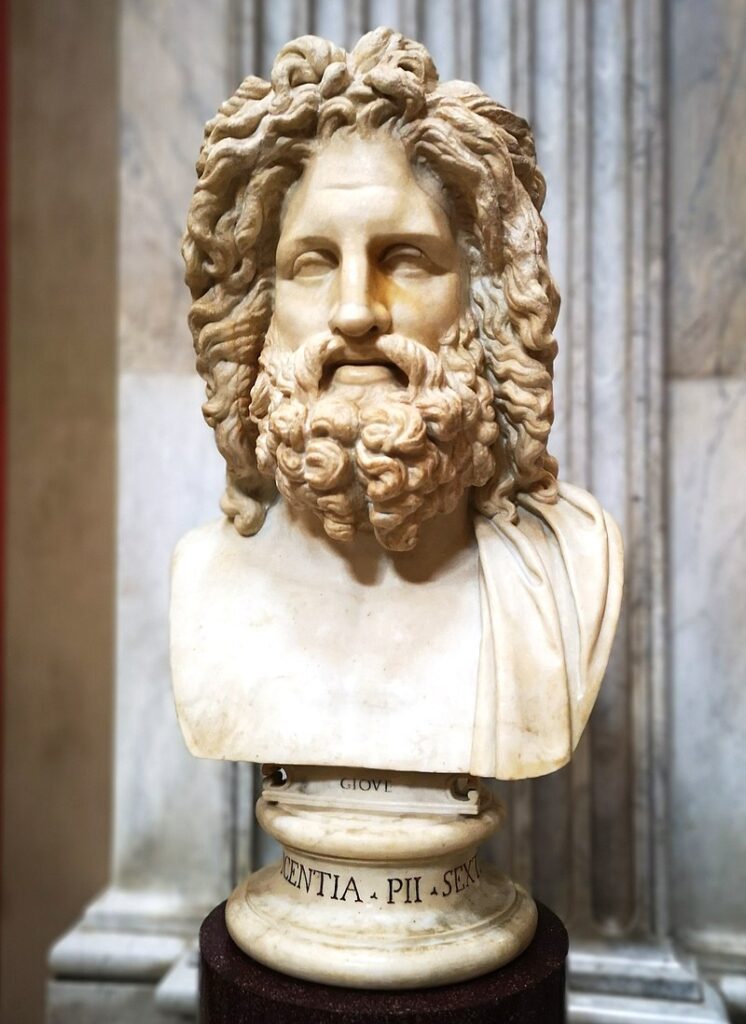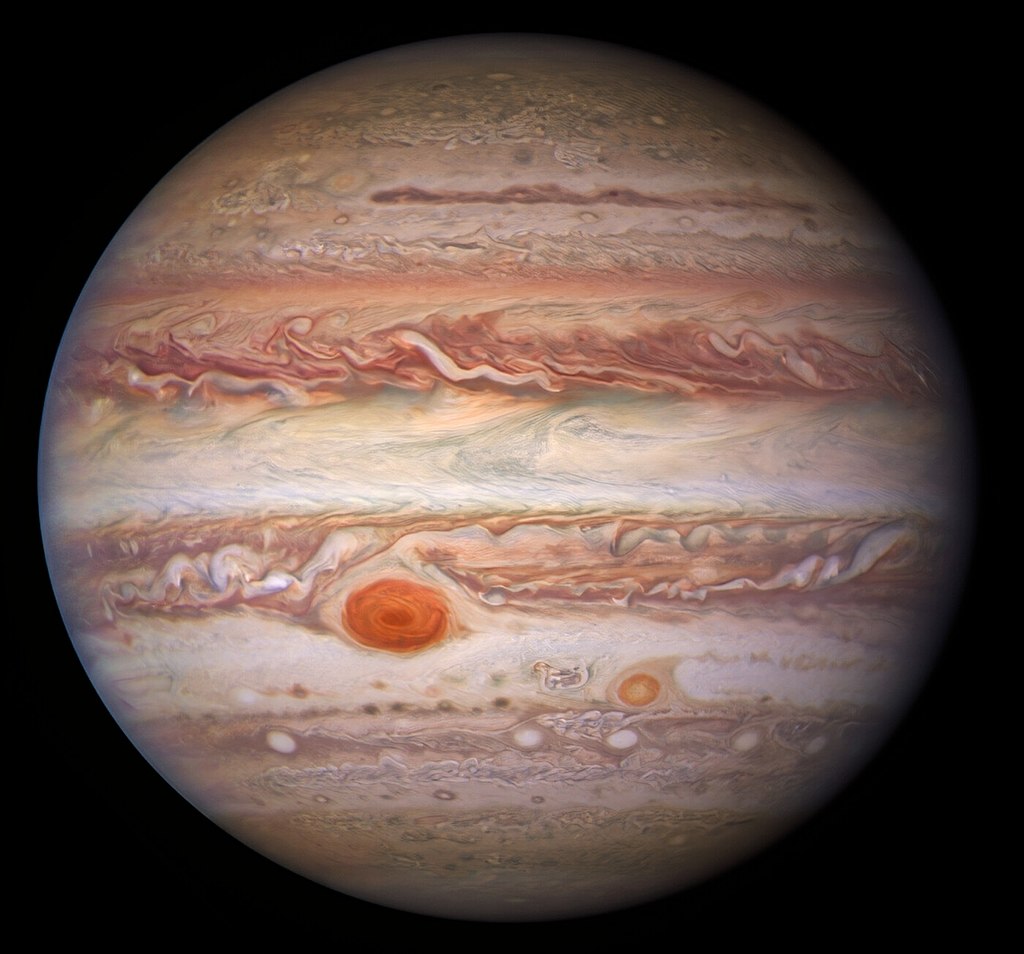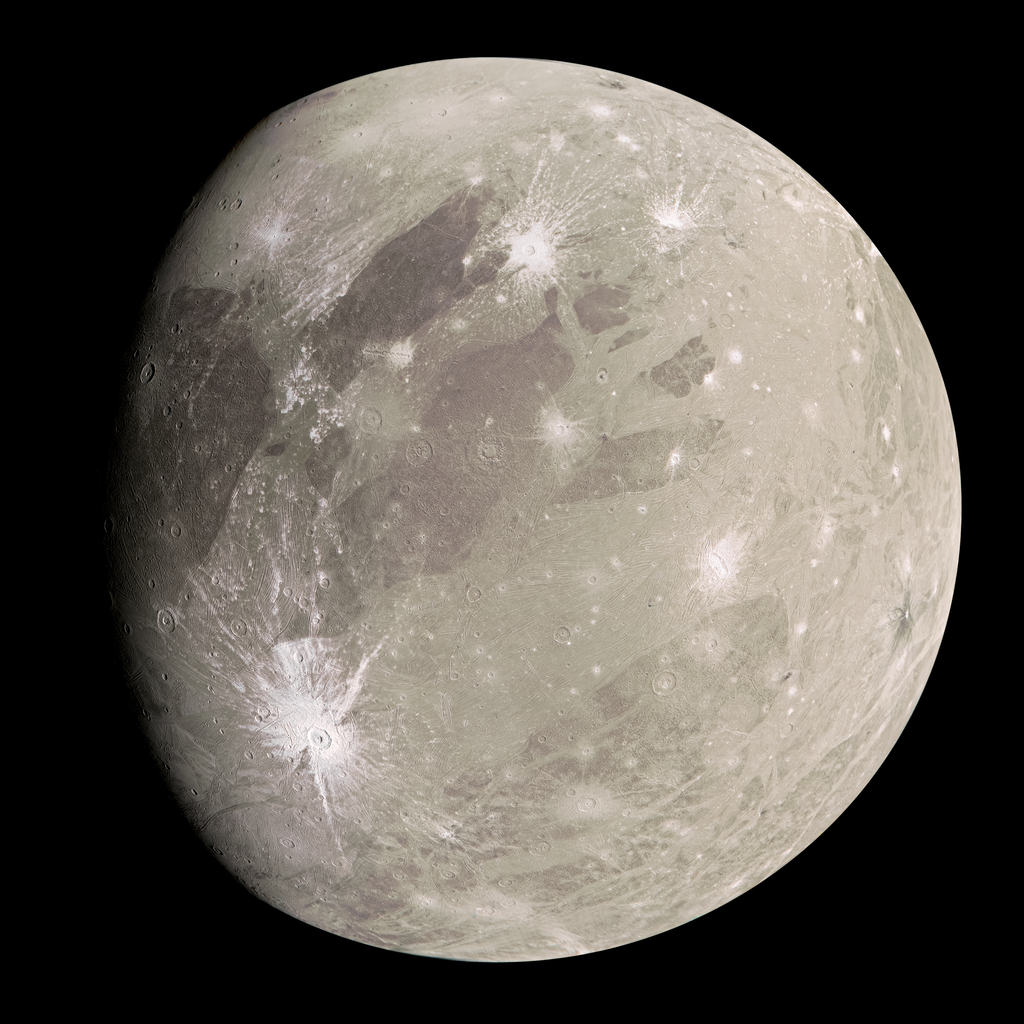As the title suggests this blog focuses on the largest planet (spoilers) in our Solar System. Here is a whole blog dedicated to facts about Jupiter!
Let’s start off with the obvious. Jupiter is massive, so massive that the word massive doesn’t do the size of Jupiter justice. Jupiter is so giant that around 1,300 Earths would fit inside the gas giant.
It’s made up of mostly hydrogen and helium. These are the same elements that make a star (like the Sun) but Jupiter was never big enough to start burning. (It’s more complicated than that, but I don’t want to waffle about it too much). This has led to the odd person here and there calling Jupiter a “failed star”.
The planet doesn’t have a solid surface as you’d find on Earth, instead just a planet core which is about the same size as Earth.
Jupiter is named after the Roman God- Jupiter. Jupiter was effectively king of the Gods. You might be more familiar with the Ancient Greek equivalent “Zeus”. I’m going to be honest I feel like a Planet called Zeus would be awesome. If I discover a planet in the future I’m going to call it Zeus.

Along with being named after a God, Jupiter is thought to be the oldest planet in the Solar System.
Jupiter has appeared in countless ancient texts so we don’t really know who the first person to discover the planet was. What we do know, is that the first detailed observations of the planet were made by Galileo Galilei in 1610.

Jupiter is the 5th Planet from the sun and actually has very faint rings around it. They’re so faint however that we can’t really see them. Has anyone actually confirmed there are definitely rings there?
Jupiter’s rings are made of dust, so hold your breath if you’re ever visiting. You don’t want to make it all the way to Jupiter just to have an annoying cough for your whole visit. It’s not important but I’ve had a cough for the last week and a bit and it’s honestly the most annoying thing ever. Don’t let a cough ruin your trip to Jupiter!
Speaking of visiting Jupiter. It would take you about 6 years to get there with our current technology and when you got there the days only last about 10 Earth hours, so you won’t have much trouble filling your days.
A word of warning, you might think you’d like to stay on Jupiter for a year to make the most out of your 6-year journey. Well, make sure you do your maths. A year of Jupiter is 11.8 Earth years.
A year is worked out by how long it takes a planet to orbit the sun. And if you travelled there and back and stayed for a Jupiter year you would be 23 years older when you got back to Earth.
Being the biggest Planet you will probably be thinking that Jupiter has the most Moons. Well, it doesn’t- not yet anyway.
Jupiter currently has 80 discovered Moons, putting it in second place behind Saturn which has 83 discovered Moons. If we want to be technical about it, Jupiter has 57 confirmed Moons and 23 provisional Moons. (Saturn has 63 confirmed Moons and 20 provisional).
A provisional Moon is one that has been discovered but hasn’t been confirmed by further observations.
Jupiter does hold the largest moon in the Solar System though. Ganymede. It’s actually bigger than Mercury and is about 665,000 miles away from Jupiter.
Many of Jupiter’s Moons have oceans under the surface so you never know. Maybe your great-grandchildren will one day be living on one of Jupiter’s Moons.

In 2011 NASA launched the Juno spacecraft to Jupiter to discover more about the story of the gas giant. In 2016 it arrived at Jupiter and orbited it 35 times and recorded three terabytes of information.
The information was so useful that NASA extended Juno’s mission to fly by the Moons of Jupiter as well as to investigate the whole Jupiter system.
You can see a selection of the Juno images on the NASA website here. (I’d recommend taking a look!)
If you look at a picture of Jupiter you may notice a giant red spot. This isn’t an acne spot like I mistakenly first thought. It is, in fact, a huge storm which is about twice the size of Earth and has been blasting for over a hundred years.
What to read next
If you’ve enjoyed these facts about Jupiter then be sure to check out these other space-themed blogs to continue your not-so-romantic blog journey.
